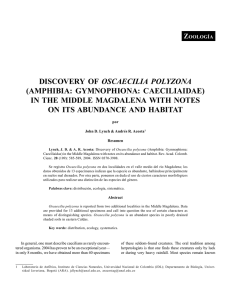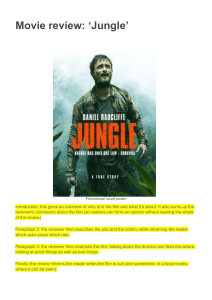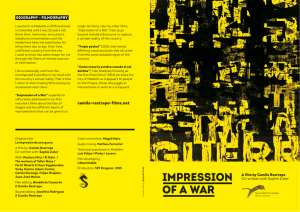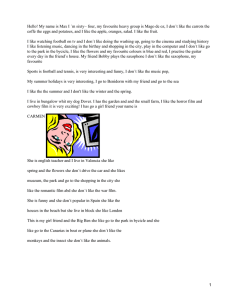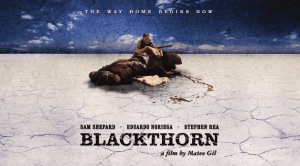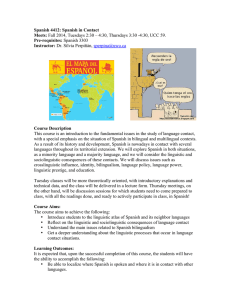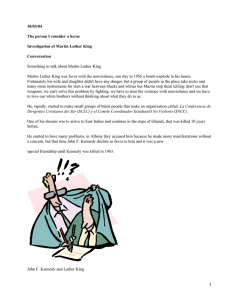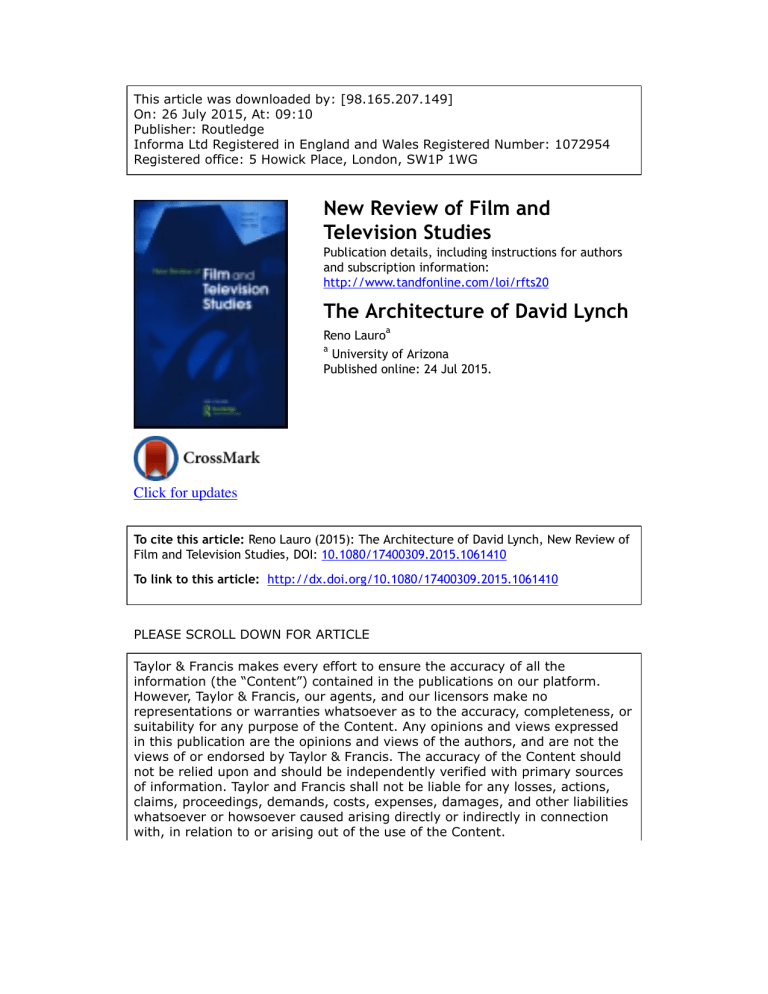
This article was downloaded by: [98.165.207.149] On: 26 July 2015, At: 09:10 Publisher: Routledge Informa Ltd Registered in England and Wales Registered Number: 1072954 Registered office: 5 Howick Place, London, SW1P 1WG New Review of Film and Television Studies Publication details, including instructions for authors and subscription information: http://www.tandfonline.com/loi/rfts20 The Architecture of David Lynch a Reno Lauro a University of Arizona Published online: 24 Jul 2015. Click for updates To cite this article: Reno Lauro (2015): The Architecture of David Lynch, New Review of Film and Television Studies, DOI: 10.1080/17400309.2015.1061410 To link to this article: http://dx.doi.org/10.1080/17400309.2015.1061410 PLEASE SCROLL DOWN FOR ARTICLE Taylor & Francis makes every effort to ensure the accuracy of all the information (the “Content”) contained in the publications on our platform. However, Taylor & Francis, our agents, and our licensors make no representations or warranties whatsoever as to the accuracy, completeness, or suitability for any purpose of the Content. Any opinions and views expressed in this publication are the opinions and views of the authors, and are not the views of or endorsed by Taylor & Francis. The accuracy of the Content should not be relied upon and should be independently verified with primary sources of information. Taylor and Francis shall not be liable for any losses, actions, claims, proceedings, demands, costs, expenses, damages, and other liabilities whatsoever or howsoever caused arising directly or indirectly in connection with, in relation to or arising out of the use of the Content. Downloaded by [98.165.207.149] at 09:10 26 July 2015 This article may be used for research, teaching, and private study purposes. Any substantial or systematic reproduction, redistribution, reselling, loan, sublicensing, systematic supply, or distribution in any form to anyone is expressly forbidden. Terms & Conditions of access and use can be found at http:// www.tandfonline.com/page/terms-and-conditions New Review of Film and Television Studies, 2015 http://dx.doi.org/10.1080/17400309.2015.1061410 BOOK REVIEW Downloaded by [98.165.207.149] at 09:10 26 July 2015 The Architecture of David Lynch, Richard Martin, London, Bloomsbury, 2014, 230 pp., £22.99 (paperback), ISBN 978-1-4725-0881-2 For the better part of 50 years, David Lynch has been exploring the permeability of the varied levels of human existence and the (often) uncanny nature of human creativity through painting, film, television, music, photography, and even furniture and interior design. In the past 10 years, the David Lynch Foundation for Transcendental Meditation has shed light on the influence of Eastern meditation in his own creative practice. Lynch’s work has been that of an imperfect and often misunderstood seer and maker – a shaman for an age of the screen. In a recent public interview at the Brooklyn Academy of Music, which offered its own moments of the strange like something out of one of Lynch’s creations, Lynch drew on a curious metaphor to explain where (creative) ideas come from: ‘Desiring an idea is like a bait on a hook. You can pull them in. If you catch an idea that you love, that’s a beautiful day. And you write it down. That idea might just be a fragment of the whole, but now you have even more bait. Thinking about that small fragment, that little fish, will bring in more. Pretty soon you might have a script. Or a chair, or a painting, or an idea for a painting. I like to think of it as in the other room the puzzle is all together, but they keep flipping in just one piece at a time.’ ‘In a sense, David’ interviewer Paul Holdengräber pensively commented with dramatic flair, ‘there’s always another room somewhere.’ ‘That’s a beautiful thing to think about,’ Lynch confidently acknowledged. Here, Lynch offers us a glimpse into the heart of his work. It is the terrible beauty of our attunement to the movement from ‘the other room(s),’ the threshold between, and the structure of the whole that well describes the dominant curiosities of Lynchian spaces. The completeness, then, of Lynch’s vision lends to the creation of permeable worlds that obey their own internal logic. The Philadelphia-inspired industrial wasteland of Eraserhead (1977); the back-alley freak show and medical theater of Victorian England in The Elephant Man (1980); the noir-baroque empire of Dune’s (1984) Padishah Emperor; Blue Velvet’s (1986) Lumberton, NC; Twin Peaks, WA; the gothic back roads of the American South in Wild at Heart (1990), The Straight Story’s (1999) corn-rowed roads of Iowa, and the neo-noir purgatory that is Los Angeles, CA, are all built up to reflect the manifold architecture of the human soul. It is for this reason, then, that an architectural study of David Lynch’s cinematic worlds seems so natural and even necessary. Richard Martin’s The Architecture of David Lynch is such an outing. Downloaded by [98.165.207.149] at 09:10 26 July 2015 2 Book Review A thoughtful exploration of Lynchian space, The Architecture of David Lynch might not be the book readers are looking for, though it will win them over with what it is – a wealth of architectural readings, a diverse bibliography, and a wonderfully insightful analysis of Lynch’s filmography that inspire and enrich reviewings. Bloomsbury generously includes 62 color plates, beginning with Frank Ghery’s design for a new cultural center in Łódź, Poland, replete with a massive glass fac! ade with scenes of Inland Empire (2006) projected, and ending with an image of Lynch’s proposed movie studios in Łódź to be built on the grounds of an old factory. In between, we move through Lynch’s oeuvre via painterly, cinematic, and architectural visual references. Martin’s architectural analysis of Lynch falls in line with recent spatial studies of Lynch’s work by Akira Mizuta Lippit, Todd McGowan, Tom McCarthy and Justin Nieland. Currently, an instructor at King’s College London and the Tate Modern, Martin is able to put Lynch’s films into conversation with Adolf Loos, Jean Nouvel, and Frank Ghery in a manner that both brings architectural theory closer to the reader and also extends the possibilities of understanding Lynch’s work. Another unexpected treat from such an approachable text under 200 pages is Martin’s diverse research. Thumbing through the bibliography yields a collection of diverse works, which should scatter the seeds of this work into several fascinating directions in the future. What makes Architecture so compelling is Martin’s wonderfully insightful analysis of Lynch’s filmography. Particularly, Chapters 3 ‘Road’ and Chapter 5 ‘Room’ offer insightful theoretical readings of Lost Highway, Wild at Heart, and Inland Empire that will no doubt compel the reader to return to those spaces with new insights. As one might suspect, the book is ordered spatially rather than chronologically or topically. The text moves from ‘Mapping the Lost Highway’ (the introduction) to ‘Town and City,’ ‘Home,’ ‘Road,’ ‘Stage,’ and ultimately ‘Room.’ While certainly appropriate, this editorial strategy does prompt the temptation to rearrange the chapters and change how meaning is constructed in the book. For example, ‘Mapping the Lost Highway’ is an excellent introduction but is dominated by a chasm between what Martin understands as ‘world,’ ‘set,’ and ‘place,’ and our experience of those elements. Without an adequate exploration of the phenomenological implications of architecture, Martin’s connections between cinema and architecture seem to be limited to things – sets, props, and furnishings – and their fantasmatic implications. Somewhere, Slavoj Žižek tersely nods in approval. This is not strictly the case, however, with Chapter 4 – ‘Stages’ – which makes reference to painter Francis Bacon, filmmaker Andrei Tarkovsky, and the poetic ephemerality of late-Heideggarian phenomenology in the first paragraph alone! Stages connote boundaries and Lynch’s boundaries connote new possibilities and new modes of being. Perhaps nothing evokes the uncanny experience of this Lynchian boundary more than the curtain, which acts as signifier for this spatial transgression. ‘The boundaries between the screen and Downloaded by [98.165.207.149] at 09:10 26 July 2015 Book Review 3 the audience, and between communal experience and individual subjectivity,’ writes Martin, ‘are placed in question [in Lynch’s films]’ (135). Martin splendidly fastens Lynch’s theme of spatial transgression – between this room and ‘the other room’ – to the counter-sites of Foucault’s heterotopias. These are places (and spaces) that challenge hegemonic spatial logic by existing ‘outside’ prompting layers of physical and psychological meaning. Ultimately, The Architecture of David Lynch comes dangerously close to emphasizing the binary of the material and psychological at the expense of (a) the phenomenological, poetic, and even metaphysical possibilities that are seemingly implicit in Lynch’s films; and (b) his Transcendental Meditation concerns, which have played such a large role in his creative endeavors. On the surface, this emphasis may come from a theoretical project centered on uncovering ideological meaning in Lynch’s narrative structures and production design. Indeed, The Architecture of David Lynch is riddled with intrusions of authorial politics early on. This, in and of itself, would be fine, but they show up unannounced (it’s either genius or ludicrous to mention Sarah Palin in reference to Lynch’s films) and as a result cause the first two chapters to be weighed down by ideological readings of Lynch’s films that often feel forced and unnecessary. In the final chapter, ‘Room,’ Martin concludes with a wonderfully provocative extended reading of Lynch’s seemingly impenetrable final feature film, Inland Empire. Here, the depth of Lynch’s work challenges Martin’s theoretical focus on urban change and the social relations of architecture. Inland Empire’s strange simultaneity and lack of definitive spatial boundaries (perhaps his most difficult film since Eraserhead) push Martin to his most interesting conclusions: ‘Inland Empire creates a series of uncertain regions between the supposedly ethereal world of film and the traditional materiality of the built environment, undermining regular conceptions of both cinema and architecture. It is a film with unexpected depth’ (175). However, Martin makes Inland manageable by declaring that all rooms exist in one room – cinema – presumably to render the film accessible to epistemological concerns. Reducing the films of David Lynch to concerns of knowing to make sense of his films spatially and to understand how the spatial ordering of his films help make sense of his stories certainly inspires re-viewings. However, this current course in Lynchian scholarship could ultimately be a counterproductive project, one that defangs and pacifies some element of the mysterium tremendum at work in them. Contrary to Slavoj Žižek’s pronouncement in The Art of the Ridiculous Sublime: On David Lynch’s Lost Highway, an ontological approach to Lynch’s films does not necessarily mean that we are saying that his films are ‘overcomplex’ and that we do not care for the plot because imagery and sound only matter (18). It is not that the line is blurred, but it simply is doing more work that Žižek allows. The line is not separating ‘reality’ from ‘mad hallucination,’ but simply the everyday from some undefined yet deeply rich other room. Now that Lynch is at work writing and preparing to direct 18 new episodes of Twin Peaks (2017), we will have more to consider. Ten years since his digital 4 Book Review Inland Empire, after which Lynch declared that he would never work with film again, the sinuous line between world and screen – a line that both separates and binds – is far more encompassing than it was in 2006. Lynch initially walked away from the new Twin Peaks believing that it should be shot primarily on film. What we may discover is that the true building blocks of David Lynch’s architecture are celluloid and pixels and the strange movement between this room and ‘the other room’ is now the norm. Downloaded by [98.165.207.149] at 09:10 26 July 2015 Reno Lauro University of Arizona [email protected] q 2015, Reno Lauro http://dx.doi.org/10.1080/17400309.2015.1061410
